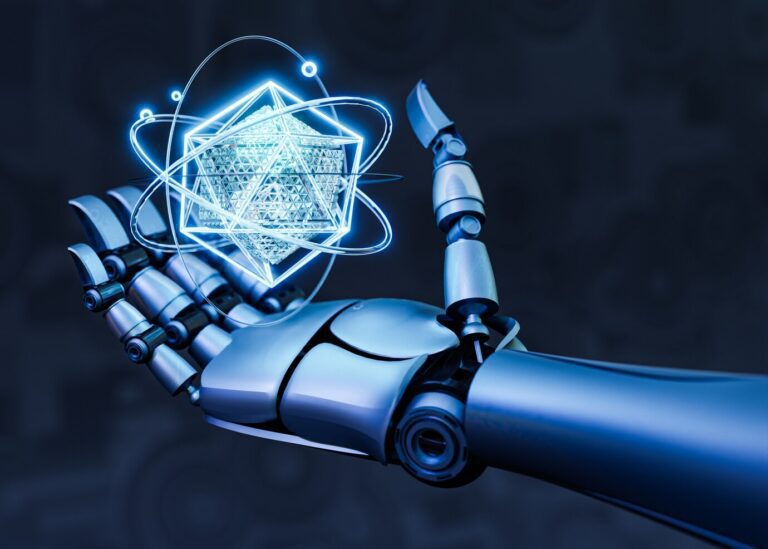
What RPA Is, and What It Isn’t
by Kris:
Kris Rebman
Intelligent Automation Delivery Manager
RPA (Robotic Process Automation) is a software technology that allows for the automation of business processes by interacting with business software applications in the same way that a human user would, the user interface (UI). If you were to watch an RPA “bot” perform a process, it would appear as if you were watching a human user perform the process while sharing their screen. You would see the mouse move, menu items selected, and data entered the same as a human would, only much faster and with a much lower error rate.
The common usage of terms such as “automation” and “robot” conjures up images of mechanical beings sharing our workspaces and performing tasks a la The Jetsons, however RPA bots are collections of software interactions, organized according to business processes, designed to follow the business logic, and executed automatically.
RPA vs “Traditional” technology solutions such as Macros and Scripts
When asked if RPA can be likened to macros and scripts, replying “yes” is too simplistic an answer, and understates the significant additional value and potential from RPA vs “traditional” technology solutions, such as macros, scripts and similar technologies.
Before RPA, similar automations were implemented via scripts and macros. They were limited in what it was possible to achieve using automation. Nowadays, scripts work relatively well when interacting with a single application (think Selenium for web automation), but when it comes to interacting within multiple applications, things tend to get a lot more complicated.
Another major difference between traditional and RPA technology is that RPA is autonomous of the application. Where you might need multiple scripting tools to create scripts to perform in your various applications, RPA can interact with multiple applications at once. It can be applied to virtually any application and multiple applications at the same time. Indeed, what drives RPA’s value is that the technology allows the user to interact with any type of application such as web, windows, wpf, java, pdf, or citrix. As an alternative one could try to replicate scripts and while that might work for 1 or 2 types of applications, things do get very complicated as you try to add more functionality to the mix. So, if you were to write an automation starting from zero, one might be able to write a Proof of Concept (POC) but scaling it to production code could take 10’s if not 100’s of times more work in treating all the exceptions and edge cases. Then when you think you are done, an application update will hit and you have to start from the beginning.
RPA Capabilities
The current and near-term future capabilities of RPA vastly exceed those of scripting and macros. “Bots” can be created by trained SMEs in the business using smart process recorders and drag and drop functionality. Most code is produced in the background, removing the need to involve IT in configuring most automations. While IT does need to partner with the business when implementing RPA the tools are designed to be built and maintained by the same operators that perform the processes.
Macros and scripts are programming with a short sequence or sequence of code written to perform a single or a series of tasks. While a macro or script is linear and fixed RPA bots are dynamic. They can “learn” and respond to triggers and orchestrated applications by accumulating knowledge of procedures over time to become more efficient.
Additionally, leading RPA tools include functionality beyond the capability of scripts and macros such as optical character recognition (OCR) and can also be combined with artificial intelligence to orchestrate business processes at a process-level across the organization. These tools have built in access to additional functionality using Google Cloud’s Cloud Vision, Cloud Translation and Cloud Natural Language. With current automation and digital technology advancements RPA is not dead but a key foundation for organizations to master and build upon using Intelligent Automation capabilities to add more value. This is not possible with macros and scripts.
Attended versus Unattended Automation
Having bots that can start jobs on computers where no-one is logged-in in a secure environment is not an easy job. Doing this in a reliable form when you have thousands of jobs that need to start at precise times of the day makes things more complicated.
Attended automation is useful when the entire end-to-end process cannot be automated. Attended bots can work alongside humans who trigger them using hotkeys so they can give and take data to and from the human employee to help work get done faster. For example, a call center agent can get help from an attended bot in near real-time during a customer call. The attended bot can find customer data from one application and automatically type it into a second application. This way, the call center agent spends less time switching between applications and instead can focus on high-value tasks such as solving customer problems. Attended bots tend to be dedicated to one individual or one machine and typically “work” as long as that one employee works.
Unattended automation executes tasks and interacts with applications independent of human involvement. Unattended bots can be triggered by external events and they can also be scheduled. They typically perform batch operations that do not require user intervention, such as if a batch of new client information is received in a spreadsheet and needs to be entered into multiple applications. Unattended bots can be shared across multiple employees and can “work” 24 x 7 x 365.
RPA
RPA can be a used to make processes more efficient using attended or unattended automation. Another key differentiator from macros and scripts is the bots can be used with any application which makes them easy to orchestrate and scale across the organization. Similarly, RPA technology requires no coding or programing so it can be used and maintained by the end user across the back, middle and front office functions which reduces the participation of IT. Digitized RPA can also be combined with Intelligent Automation technology using multiple bots to not only orchestrate business processes but also automate more complex tasks and add functionality to drive value in the business.
Learn more about Chazey Partner’s solution Robotic Process Automation








